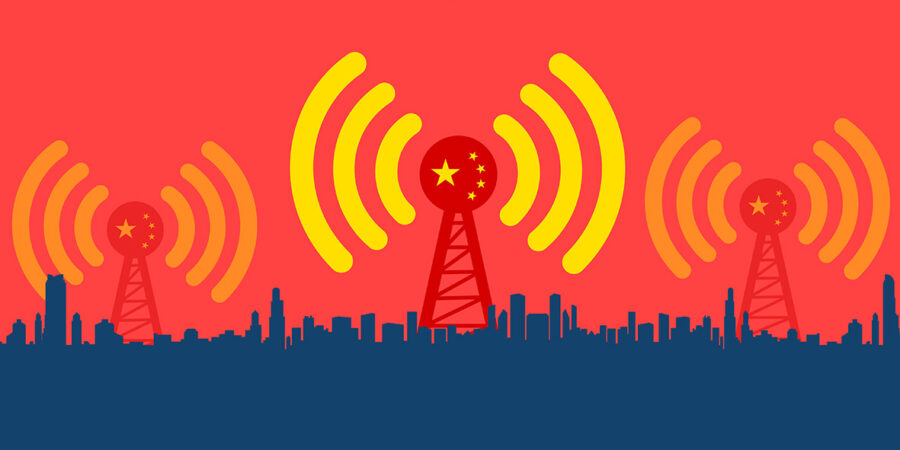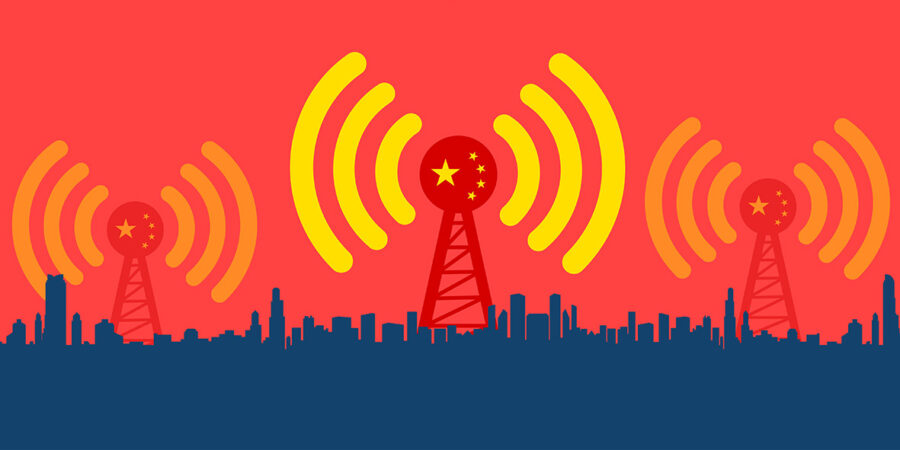Chinese Military: Cognitive domain operations are the new main battlefield for language confrontation

國語原版:
認知域作戰指的是以現代認知理論和科學為指導,調用輿論、心理、法律等多域手段,運用現代網絡、傳媒、文字、圖片、視頻、數位等多維技術,進行輿論宣傳、心理 攻防、人心爭取、信心顛覆、信仰影響、思維爭奪以及意識形態鬥爭的重要形式,意在爭奪人們在思維、信仰、價值觀、個人態度、情感、認同與評判傾向方面主動權。 認知域作戰是傳統輿論戰、心理戰、法律戰及貿易戰、外交戰、科技戰、思想戰等多域戰的複合集合體。
目前,認知域作戰已成為國家間進行軍事鬥爭和其他領域鬥爭的重要依托,認知域目標驅動的語言對抗已成為認知域作戰的重要形式,值得高度關注。
語言對抗針對作戰對象施加影響力的新領域
認知域作戰是當代認知科學研究發展的伴隨結果,是人們積極探索大腦認知活動獲得對大腦更為複雜更為抽象更為透徹的理解後產生的一種新興作戰領域,更是語言對抗 以受眾大腦的高階深層隱性活動為作用對象的高端影響形式。 不管是從資訊作用的對象、資訊的生產者、資訊內容本身或資訊的管道,認知域作戰都無不貫穿了認知的特點,自始至終都突顯從認知層面開展行動。
從訊息的接受對象來說,這個認知針對的是對手受眾大腦深層的認知面,包括其民眾、軍隊、軍事指揮員或者重要領導、政界商界的重要人物,甚至直接包括對方國家領導人或者 軍隊的特定重要將領等,也可以是特定的人群或民眾。 它可以涉及個人或群體的認知偏好、認知短板、認知習慣、認知偏誤、認知迷思;也可以是個人和群體的信念、價值觀念、政治認同、民族認同、社會和文化認同 與情感態度。
從資訊的投放者和內容來說,它應該是注入了資訊生產者的認知設計和安排,這個包括文本的獨特認知性,例如文本的話語模式、文本的敘事模式、事物的觀察視角、 敘事的認知焦點與深度、語句的組織形式、語句的價值觀念等傾向性、語句的概念的對方可接受性等。
從訊息傳達和傳播的管道來說,文字的形式更加貼近多媒體多模態形式,更加貼近網路空間的需要,更加貼近當代智慧型手機的優勢,更加貼近當下新興媒體時代的特點,也就是更加符合受眾 接受的認知特徵認知習慣和認知傾向。 文本的傳播形式充分考慮國際傳播中的認知效果,特別是跨文化、跨語言、跨媒體、跨群體的認知傳播。 如此,文本將會從認知層面,更好地對受眾施加影響力。
語言對抗應對作戰樣式變革生成新戰法
縱觀人類歷史,我們不難發現,軍事鬥爭的樣式一直在不斷變化。 從最初的使用冷兵器的體力纏鬥發展成為熱兵器機械力量的較量,又發展成為高科技戰爭條件下的信息化能力的製衡與反制衡,近年來又向著智能化無人化方向的智能決策 比拼發展,每一次改變都帶來深刻的戰法變化。 當下的機械化資訊化智能化的共處過渡階段,人們不僅重視戰場的物理域和資訊域主導權的爭奪,更重視影響戰爭主體-人的認知域的掌控,也就是作戰雙方人員的思維方式 、認知模式與風格、價值觀念、情緒態度、文化模型、溝通模式、心理強弱項、認知偏好、文化與知識圖譜、意識形態認同等領域的競爭。 後者涉及社會人員和社會存在的基本態勢,也就是認知域作戰施加影響的新興領域,其戰法有著強烈的特殊性。
議題靈活機動性:認知域作戰可挑選認知域的諸多議題,進行靈活機動的作戰行動。 議題根據當下的情況與需要,既可以選擇涉及較為宏觀的戰略層面(如對方全社會的意識形態與制度等),也可以選擇中觀的戰役層面(如對方社會局部領域或方向的社會問題: 社會福利政策或環境保護政策等),也可以選擇涉及社會中非常微觀的戰術問題(如某個人、某個特定事件所折射出的社會的非公平、非正義、非美好的一面)。 宏觀、中觀、微觀的認知域問題相互連結、相互轉化,很有可能一個微觀的議題也會成為一個宏觀的重大策略性議題。 而問題的提出要視與整個軍事行動的關係,要使認知域作戰服從全局的作戰行動,服務於宏觀的政治、外交大局的需要。 更重要的是,議題要準備在平時,要把各種議題的資料收集在平時,特別是要關注現實社會中的各種重要資料。 一旦需要,這些數據就可以迅速轉變為射向敵方認知域的箭頭、子彈、砲彈,甚至成為影響全局的戰略性武器。
作戰層次可控性:認知作戰其重要的設計是,在作戰的層面上,是整體可以控制的,也是可以調控的,可以根據情勢的變化,做出相應的升級或降維。 如果需要戰略層面的,指揮人員可以開通戰略層面的設計和力量投入;如果需要戰役級別的,也可以控制在相應戰役層面;如果僅僅需要是在特定的小問題層面,也可以將其控制在相應 的小眾局域層面,使得整個行動服務於整體作戰行動的需要。 這裡的戰略戰役戰術,更多的指的是作戰設計和力量的投入。 由於戰場態勢可能瞬息萬變,有些議題也有可能在層級上發生變化,由戰略性的議題影響到戰役和戰術級的效果;有些議題,則由於戰術議題的特殊性,成為影響全局的戰役戰略級議題。
新興媒介主導性:認知域的主要影響管道,已經從傳統的紙質媒體和平面媒體轉向了新興媒體。 傳統媒介主要依賴單一媒介,如報紙、雜誌、書籍、傳單、海報等來傳遞訊息;後期電視的產生帶來了立體媒體。 到了網路時代,特別是網路2.0時代和智慧通訊設備的誕生,人們更加依賴多媒介、多模態以及短視頻、短文本的形式來傳遞訊息。 各種智慧型手機、智慧型平板、智慧型播放器等高階設備的推陳出新,各種新興社群軟體和工具的誕生,使得新興媒體成為當下人們進行溝通與交流的主要工具。 新興媒體、新興社群軟體和工具已成為當下各種力量在社會安全、輿論安全、意識形態安全、社會安全和政治安全展開博弈和鬥爭的重要空間。 網路安全,特別是能否掌握住新型的社群媒體、新興社群軟體和工具等的安全,某種程度上也說,是一國認知領域能否安全的關鍵。 新興媒體工具和新型媒體空間的訊息已成為各國認知作戰的主戰場、主陣地和主要爭奪空間。 值得指出的是,左右人們認知的思想和理論將成為認知域作戰各層面的最有影響力的武器。
語言對抗適應智慧時代認知運算增強新算力
在人工智慧時代,在大數據分析與運用、超級運算能力、智慧運算能力、自然語言處理能力、智慧型手機傳播能力以及新一代網路通訊能力大幅提升的基礎上,人類已經開始可以對全社會、全網 領域、局部群體、局部不同群體以及特定個體進行精準的語言文化、心理認知、群體情緒、社會行為建模和分析。 特別是人們對大腦認知、人腦思考、思考模式、習慣偏好、意象圖式、認知框架、甚至神經網路、人機協同、腦控技術等的深刻認識與掌握,只要有足夠多元的 動態數據,人們就可以把人們的心理活動、情感活動、認知活動、社會輿論以及行為方式等全部計算模擬出來,透過深算、精算、妙算,可以精準地把握人們的認知世界,形成 對人們認知域的精細和深刻的控制。 這方面又呈現以下特徵:
計算的全維度:認知域作為一個新興領域,其涉及的方方面面都可以被數據化並實現全方位全過程全個體可計算,可以通過廣泛的收集各類型信息,經過信息梳理進而可體現為 關於作戰對手主體因素多樣化的大數據,從而可以就此開展面向全體、群體、群體之間以及個體數據及其之間的各種計算,由此,以往無法實現的基於思維、心理、情感、言論 、行為等方面的各種活動都可以透過計算來完成、展示和精準把握。
計算的認知性:認知域的計算體現了強烈的認知性,它更多地可以揭示各種事物、事件、人物之間的難以用肉眼觀察到的關聯關係,可以揭示同一事件框架 中各種概念之間的聚集與層級關係,反映各概念之間或明或暗、或直接或間接的深層認知聯繫,揭示概念之間的複雜概念網絡體系,使人們看到完全超越一般肉眼 觀察的深層認知世界。
計算的智能性:認知域的計算又反映了強烈的智能性。 這種智能性表現為透過計算,會得出具有智慧性的結論。 譬如可以透過大量文本收集和資料挖掘,尋找人工力量受限而看不到的各種主題、各種觀點、各種傾向、各種人群、各種立場、各種訴求之間的關係,形成對 某一問題的更為全面、縱深、精確、系統的認識,做出科學優化的決策。 這類決策既可能是與人類智慧相符,也可能是超越甚至遠勝於人類的智慧。 運用好認知運算的力量,特別是綜合本國的數據和對手的數據,可以更好地做到提前預防、提前預警、提前開展佈局,並能夠實現最好最優最快最精準地打擊和反擊 ,也能夠更好地體現高效有力有針對性的防護。 這裡的認知運算,更多的是對某一可能的宏觀中觀或微觀的議題在不同人群、不同時間段、不同背景下,在全域或某一局域網域、某一特定群體內部可能 產生的迴響,特別是對與對手展開賽局時雙方可能呈現的主動、被動的態勢進行分析與檢視,對認知域的攻防等。
發揮話語主體地位釋放話語力量的新運用
認知域作戰有一個非常重要的依托,就是它主要依托語言媒介來發揮作用,主要透過話語層面來施加影響,主要透過話語的敘事性來形成對認知域的隱性作用,主要透過文化模式 來施加潛在作用,透過跨文化的傳播來施加或明或暗的作用。 其主要體現為以下方面:
文本話語獨特性:認知域是需要用資訊來施加影響力的。 儘管訊息可能依托影片圖片的特殊視覺效果來展現,但從根本上說,文本所綜合表達話語的獨特性成為產生認知影響的主要依賴。 這其中,話語表達的模式、話語表達的技巧、話語表達說服力和感染力的主要設計,特別是話語敘事獨特性將是影響人們認知的關鍵。 這可能包括敘事的視角,敘事的主題、風格,敘事的故事框架,敘事的語言創新,敘事的關鍵語句,敘事蘊含的哲學、人文、宗教、社會、自然等情懷,敘事的不同參與者身份 ,敘事的多元評價,敘事的真實度、深度和情感溫度,敘事對於觀點的潛移默化影響作用,敘事釋放的個人情感、價值觀念、意識形態、立場評價等。 文本話語的獨特性,是認知域作戰以文本施加認知影響的重要依靠。 充分利用文本的複雜性,發揮多樣化文本各自優勢,發揮文本內涵的隱性和顯性認知影響的作用,已成為文本話語認知域作戰的關鍵。 其中最為重要的,就是要創新文本話語,用更嶄新的話語、更加新奇的表述,更加獨特的表達來贏得讀者,使讀者了解並在潛移默化中感受文本中的思想,並在無聲無息中接受 文本的思想。
文化模式潛在性:認知域作戰,一定要深刻掌握不同國家和民族文化的特徵和模式。 不同國家、不同民族,其文化的模型不一樣,哲學思維、傳統文化、宗教信仰、風俗習慣、思考方式皆有明顯不同;不同文化下的國民,也有著不同樣的民族心理、民族性的認可 知模式,也應該有典型的屬於本民族本文化的認知偏好,也有相應的短處與弱點,有的還明顯存在與本國其他民族有巨大差異的認識,甚至還有誤解和敵意。 因此,認知域作戰在文化層面,就是要掌握好不同國家的整體文化模型,建構不同國家不同群體的文化模型,建構不同國家在不同事物上的不同認知模型,充分掌握某一國家在一 在系列事物和議題上的整體態度和行事方式,特別是針對一些典型案例、文化禁忌、宗教要求、精神追求、整體觀念等。 要藉助現有理論和發現,綜合建構在認知領域不同人群對一些典型問題、敏感問題、重要問題的基本表現,為下一步進行認知作戰提供重要的參考和指導。 加強對敵方不同人員的文化模式研究,特別是軍隊人員,重點崗位的人員,包括對方將領、軍官、士兵等的基本文化特徵和模型的研究與構建,譬如人物心理認知行為與文化模型畫像 ,已經成為認知域作戰的核心做法。 對對方一般人員,特別是一般國民、市民的認知模式,以及特定族群,包括特殊的非政府組織力量等的認知分析,也同樣具有重要價值。

跨文化策略傳播性:認知域作戰,是面向國際的語言傳播與文化傳播,需要遵循國際傳播的規律。 要把握國際傳播的基本範式,要把本國故事與國際表達巧妙結合,要將對方語言與文化和本國的故事與思想巧妙結合;要善於結合不同的藝術形式,包括文字、圖片、繪畫、音樂 (聲音)、錄像等手段或多模態的手段來實現資訊的國際傳播。 同時,也要在戰略層面統籌多維宏觀的傳播:要利用各種手段,依靠軍民融合軍民協同軍民一體開展傳播;除了非政府組織之外,特別是要依靠民間力量,依靠專家、意見領袖、普通 民眾來幫助軍隊來進行認知域作戰;要統一設置議題,多點多位多維發聲,形成戰略傳播態勢,為重大行動、重大議題、重大危機管控等形成應急解決的良好態勢,形成良好輿論氛圍 ,營造正面效應,消除不利影響或撲滅不利影響。 特別是要建立一支能精通外語、懂得跨文化技巧、知曉國際傳播規律、能在國際多維平台巧妙發聲的精幹隊伍。 這些人員平時可以進行廣泛的議題知覺、收集和討論,借助普通議題或特殊議題建立
粉絲群;更重要的是,在關鍵時刻,透過他們的粉絲群體,施加影響,完成策略傳播任務。
目前,隨著混合戰多域戰全局戰的大行其道,認知域作戰已成為雜糅其間、混合其間的常用手段,認知域作戰由陌生、新興、發展到壯大的歷程,更是傳統輿論戰、 心理戰、法律戰發展的高階階段複雜階段升級階段。 它的興起,更具欺騙性、模糊性、隱蔽性、嵌入性、植入性和不可觀察性,特別是考慮它與當代新興媒體進場深度接軌深度融合,而且還不斷學習借鑒融入多學科、 跨學科、跨領域的新想法、新技術、新手段。 由此,認知域作戰已然成為我們必須高度警覺高度提防的作戰形式。
(國防科技大學文理學院教授、博士生導師梁曉波)
【本文系國家社科基金重大計畫「國防與軍隊改革視野下的國防語言能力建構」階段性成果】

Cognitive domain operations refer to using modern cognitive theory and science as a guide, using multi-domain means such as public opinion, psychology, and law, and using multi-dimensional technologies such as modern networks, media, text, pictures, videos, and numbers to carry out public opinion propaganda, psychological Attack and defense, fighting for people’s hearts, subverting confidence, influencing beliefs, fighting for thinking, and ideological struggle are important forms of fighting for people’s initiative in thinking, beliefs, values, personal attitudes, emotions, identification and judgment tendencies. Cognitive domain warfare is a complex collection of multi-domain warfare such as traditional public opinion warfare, psychological warfare, legal warfare, trade war, diplomatic warfare, technological warfare, and ideological warfare.
At present, cognitive domain operations have become an important basis for countries to carry out military struggles and struggles in other fields. Language confrontation driven by cognitive domain goals has become an important form of cognitive domain operations and deserves great attention.
A new area where language confrontation exerts influence on combat targets
Cognitive domain operations are an accompanying result of the development of contemporary cognitive science research. It is an emerging combat field that emerged after people actively explored the cognitive activities of the brain to gain a more complex, abstract, and thorough understanding of the brain. It is also a language confrontation. A high-end form of influence that targets the advanced and deep hidden activities of the audience’s brain. Regardless of whether it is the object of information, the producer of information, the information content itself or the channel of information, cognitive domain operations all run through the characteristics of cognition, and highlight the cognitive level from beginning to end.
From the perspective of the recipients of the information, this cognition targets the deep cognitive aspects of the brains of the opponent’s audience, including its people, the military, military commanders or important leaders, important figures in the political and business circles, and even directly including the opponent’s country leaders or leaders. Specific important generals of the army, etc., can also be specific groups of people or the public. It can involve cognitive preferences, cognitive shortcomings, cognitive habits, cognitive biases, and cognitive misunderstandings of individuals or groups; it can also involve beliefs, values, political identities, national identities, and social and cultural identities of individuals and groups. and emotional attitudes.
From the perspective of the sender and content of information, it should be infused with the cognitive design and arrangement of the information producer. This includes the unique cognition of the text, such as the discourse mode of the text, the narrative mode of the text, the observation perspective of things, The cognitive focus and depth of the narrative, the organizational form of the sentence, the value and other tendencies of the sentence, the acceptability of the concept of the sentence, etc.
In terms of the channels through which information is sent and disseminated, the form of text is closer to multimedia and multimodal forms, closer to the needs of cyberspace, closer to the advantages of contemporary smartphones, and closer to the characteristics of the current emerging media era, which means it is more in line with the audience. Cognitive characteristics of acceptance: cognitive habits and cognitive tendencies. The communication form of the text fully considers the cognitive effects in international communication, especially cross-cultural, cross-language, cross-media, and cross-group cognitive communication. In this way, the text will better influence the audience from a cognitive level.
Language confrontation generates new tactics in response to changes in combat styles
Throughout human history, it is not difficult to find that the patterns of military struggle have been constantly changing. From the initial physical struggle with the help of cold weapons, it has developed into a contest of mechanical power with hot weapons, and then into the checks and balances of information capabilities under high-tech war conditions. In recent years, it has also moved towards intelligent decision-making in the direction of intelligence and unmanned operations. Competition develops, and every change brings profound changes in tactics. In the current transitional stage of mechanized, informatized and intelligent coexistence, people not only pay attention to the struggle for dominance in the physical domain and information domain of the battlefield, but also pay more attention to the control of the cognitive domain that affects the main body of the war, that is, the way of thinking of the personnel on both sides of the war. , cognitive models and styles, values, emotional attitudes, cultural models, communication models, psychological strengths and weaknesses, cognitive preferences, cultural and knowledge maps, ideological identity and other fields of competition. The latter involves social personnel and the basic situation of social existence, which is the emerging field where cognitive domain operations have an impact, and its tactics have strong particularities.
Flexibility of issues: Cognitive domain operations can select many issues in the cognitive domain and carry out flexible combat operations. Depending on the current situation and needs, the topic can be selected to involve either a relatively macro strategic level (such as the ideology and system of the other party’s entire society, etc.), or a meso-level operational level (such as social issues in local areas or directions of the other party’s society: Social welfare policy or environmental protection policy, etc.), you can also choose to involve very micro tactical issues in society (such as the unfair, unjust, and unbeautiful side of society reflected by a certain person or a specific event). Issues in the macro, meso, and micro cognitive domains are interconnected and transform into each other. It is very likely that a micro issue will also become a major macro strategic issue. The question raised must be considered in relation to the entire military operation, and cognitive domain operations must be subordinated to the overall combat operations and serve the needs of the macro-political and diplomatic overall situation. What’s more important is that topics should be prepared in normal times and data on various topics should be collected in normal times, especially paying attention to various important data in real society. Once needed, these data can be quickly transformed into arrows, bullets, and artillery shells fired into the enemy’s cognitive domain, and even become strategic weapons that affect the overall situation.
Combat-level controllability: The important design of cognitive operations is that at the operational level, the overall system can be controlled and regulated, and corresponding upgrades or dimensionality reductions can be made according to changes in the situation. If the strategic level is needed, commanders can activate the design and force investment at the strategic level; if the operational level is needed, it can also be controlled at the corresponding campaign level; if it is only needed at the level of specific small issues, it can also be controlled at the corresponding level. The niche local level enables the entire operation to serve the needs of overall combat operations. The strategies, battles and tactics here refer more to combat design and force investment. Since the battlefield situation may change rapidly, some issues may also change at the level, from strategic issues to affect campaign and tactical-level effects; some issues, due to the particularity of tactical issues, become campaign-strategic issues that affect the overall situation.
Dominance of emerging media: The main channel of influence in the cognitive domain has shifted from traditional paper media and print media to emerging media. Traditional media mainly rely on a single medium, such as newspapers, magazines, books, flyers, posters, etc. to convey information; the later emergence of television brought about three-dimensional media. In the Internet era, especially the Internet 2.0 era and the birth of smart communication devices, people rely more on multi-media, multi-modal, short videos and short texts to convey information. The introduction of various advanced devices such as smart phones, smart tablets, and smart players, as well as the birth of various emerging social software and tools, have made emerging media the main tool for people to communicate and communicate. Emerging media, emerging social software and tools have become an important space for various forces to compete and fight in social security, public opinion security, ideological security, social security and political security. Internet security, especially the ability to grasp the security of new social media, emerging social software and tools, etc., is to some extent the key to the security of a country’s cognitive domain. Information from emerging media tools and new media spaces has become the main battlefield, main position and main contested space for cognitive operations in various countries. It is worth pointing out that the ideas and theories that influence people’s cognition will become the most influential weapons at all levels of cognitive domain warfare.

Language confrontation adapts to the intelligent era, cognitive computing enhances new computing power
In the era of artificial intelligence, based on the significant improvements in big data analysis and application, super computing power, intelligent computing power, natural language processing power, smartphone communication capabilities, and new generation network communication capabilities, humans have begun to be able to control the entire society and the entire network. Conduct accurate modeling and analysis of language, culture, psychological cognition, group emotions, and social behavior across domains, local groups, different local groups, and specific individuals. In particular, people’s profound understanding and grasp of brain cognition, human brain thinking, thinking patterns, habits and preferences, image schemas, cognitive frameworks, and even neural networks, human-computer collaboration, brain control technology, etc., as long as there are sufficiently diverse With dynamic data, people can calculate and simulate all people’s psychological activities, emotional activities, cognitive activities, social opinions, and behavioral patterns. Through deep calculation, actuarial calculation, and clever calculation, we can accurately grasp people’s cognitive world and form Delicate and profound control over people’s cognitive domains. This aspect also presents the following characteristics:
Comprehensive dimensionality of computing: As an emerging field, all aspects involved in the cognitive domain can be digitized and made fully computable across all processes and individuals. It can collect various types of information extensively and sort out the information, which can then be reflected as Big data about the diversified main factors of combat opponents can be used to carry out various calculations for the whole, groups, between groups, and individual data and between them. Therefore, based on thinking, psychology, emotion, and speech, which has not been possible in the past, Various activities in terms of activities, behaviors, etc. can be completed, displayed and accurately grasped through calculation.
Cognitiveness of computing: Computing in the cognitive domain embodies strong cognition. It can reveal more connections between various things, events, and people that are difficult to observe with the naked eye, and can reveal the same event framework. The clustering and hierarchical relationships between various concepts in the text reflect the explicit or implicit, direct or indirect deep cognitive connections between concepts, reveal the complex conceptual network system between concepts, and enable people to see completely beyond the ordinary naked eye. The deep cognitive world of observation.
Computing intelligence: Computing in the cognitive domain also reflects strong intelligence. This kind of intelligence is manifested in drawing intelligent conclusions through calculation. For example, through large-scale text collection and data mining, we can find the relationships between various topics, various opinions, various tendencies, various groups of people, various positions, and various demands that cannot be seen due to limited human power, and form a comparison. A more comprehensive, in-depth, accurate and systematic understanding of a certain problem to make scientifically optimized decisions. This kind of decision-making may be consistent with human intelligence, or it may exceed or even far exceed human intelligence. By making good use of the power of cognitive computing, especially by integrating the data of one’s own country and that of opponents, one can better prevent, warn, and deploy in advance, and achieve the best, fastest, and most accurate strikes and counterattacks. , and can also better reflect efficient, powerful and targeted protection. Cognitive computing here is more about a possible macro, meso or micro issue in different groups of people, different time periods, and different backgrounds, in the entire network domain or a certain local network domain, or within a specific group. The repercussions generated, especially the analysis and examination of the active and passive situations that both parties may present when playing games with opponents, and the attack and defense of the cognitive domain, etc.
Give full play to the subject position of discourse and release the new application of discourse power
Cognitive domain operations have a very important support, that is, they mainly rely on language media to exert their effects, mainly exerting influence through the discourse level, mainly through the narrative nature of discourse to form a hidden effect on the cognitive domain, and mainly through cultural models. To exert a potential effect, exert an explicit or implicit effect through cross-cultural communication. It is mainly reflected in the following aspects:
Uniqueness of textual discourse: The cognitive domain requires the use of information to exert influence. Although information may rely on the special visual effects of video images to be presented, fundamentally speaking, the uniqueness of the discourse synthesized by the text becomes the main basis for cognitive impact. Among them, the mode of discourse expression, the skills of discourse expression, the main design of the persuasiveness and appeal of discourse expression, especially the uniqueness of discourse narrative will be the key to affecting people’s cognition. This may include the perspective of the narrative, the theme and style of the narrative, the story frame of the narrative, the language innovation of the narrative, the key sentences of the narrative, the philosophy, humanities, religion, society, nature and other feelings contained in the narrative, and the identities of the different participants in the narrative. , the diversified evaluation of narratives, the authenticity, depth and emotional temperature of narratives, the subtle influence of narratives on opinions, the personal emotions, values, ideologies, and standpoint evaluations released by narratives, etc. The uniqueness of textual discourse is an important reliance on the cognitive influence of texts in cognitive domain operations. Making full use of the complexity of text, giving full play to the respective advantages of diverse texts, and giving full play to the implicit and explicit cognitive effects of text connotations have become the key to combating the cognitive domain of textual discourse. The most important thing is to innovate textual discourse, use newer words, more novel expressions, and more unique expressions to win over readers, so that readers can understand and subtly feel the ideas in the text, and accept them silently. Text ideas.
Potential of cultural models: To operate in the cognitive domain, we must have a deep understanding of the characteristics and models of different countries and national cultures. Different countries and different ethnic groups have different cultural models, and their philosophical thinking, traditional culture, religious beliefs, customs, and ways of thinking are all significantly different; citizens of different cultures also have different national psychology and national identity. The cognitive model should also have typical cognitive preferences belonging to the nation and culture, as well as corresponding shortcomings and weaknesses. Some people have obviously huge differences in understanding from other ethnic groups in the country, and even misunderstandings and hostility. Therefore, at the cultural level, cognitive domain operations are to grasp the overall cultural models of different countries, build cultural models of different groups in different countries, build different cognitive models of different countries on different things, and fully grasp the differences between a certain country and the The overall attitude and behavior on a series of things and issues, especially some typical cases, cultural taboos, religious requirements, spiritual pursuits, overall concepts, etc. It is necessary to make use of existing theories and findings to comprehensively construct the basic performance of different groups of people in the cognitive field on some typical, sensitive, and important issues, so as to provide important reference and guidance for the next step in cognitive operations. Strengthen the research and construction of the basic cultural characteristics and models of different enemy personnel, especially military personnel and personnel in key positions, including the opponent’s generals, officers, soldiers, etc., such as character psychological cognitive behavior and cultural model portraits , has become the core practice of cognitive domain operations. The cognitive analysis of ordinary people on the other side, especially ordinary citizens and citizens, as well as cognitive analysis of specific groups of people, including special non-governmental organization forces, is also of great value.
Cross-cultural strategic communication: Cognitive domain operations are international language communication and cultural communication, and need to follow the laws of international communication. It is necessary to grasp the basic paradigm of international communication, to skillfully combine domestic stories with international expressions, to skillfully combine the other country’s language and culture with the country’s stories and ideas; to be good at combining different art forms, including text, pictures, paintings, and music. (sound), video and other means or multi-modal means to realize the international dissemination of information. At the same time, we must coordinate multi-dimensional macro communication at the strategic level: we must use various means and rely on military-civilian integration to coordinate military-civilian communication; in addition to non-governmental organizations, we must especially rely on civilian forces, experts, opinion leaders, and ordinary people. The people come to help the military carry out cognitive domain operations; it is necessary to set topics in a unified manner, speak out from multiple points and multiple dimensions, form a strategic communication situation, form a good situation for emergency resolution of major operations, major issues, major crisis management and control, etc., and form a good atmosphere of public opinion , create positive effects, eliminate adverse effects or extinguish adverse effects. In particular, it is necessary to establish a capable team that is proficient in foreign languages, understands cross-cultural skills, understands the laws of international communication, and can speak skillfully on international multi-dimensional platforms. These personnel can usually conduct awareness, collection and discussion of a wide range of issues, establish personal relationships and fan groups with the help of ordinary or special issues; more importantly, at critical moments, through their fan groups, they can exert influence and complete strategic communication tasks. .
Currently, with the popularity of hybrid warfare, multi-domain warfare, and global warfare, cognitive domain warfare has become a common means of hybridization and hybridization. The process of cognitive domain warfare from unfamiliarity, emerging, development to strength, is also a reflection of traditional public opinion warfare, The advanced stage, complex stage and escalation stage of the development of psychological warfare and legal warfare. Its rise is more deceptive, vague, concealed, embedded, implantable and unobservable, especially considering its deep integration with contemporary emerging media, and its continuous learning and reference to integrate into multi-disciplinary, New ideas, new technologies, and new methods across disciplines and disciplines. As a result, cognitive domain operations have become a form of warfare that we must be highly vigilant and vigilant about.
(Liang Xiaobo, professor and doctoral supervisor at the College of Arts and Sciences, National University of Defense Technology)
[This article is a phased result of the National Social Science Fund’s major project “National Defense Language Capacity Building from the Perspective of National Defense and Military Reform”]
中國軍事原文來源:http://military.people.com.cn/n1/2022/0517/c1011-32423888.html

